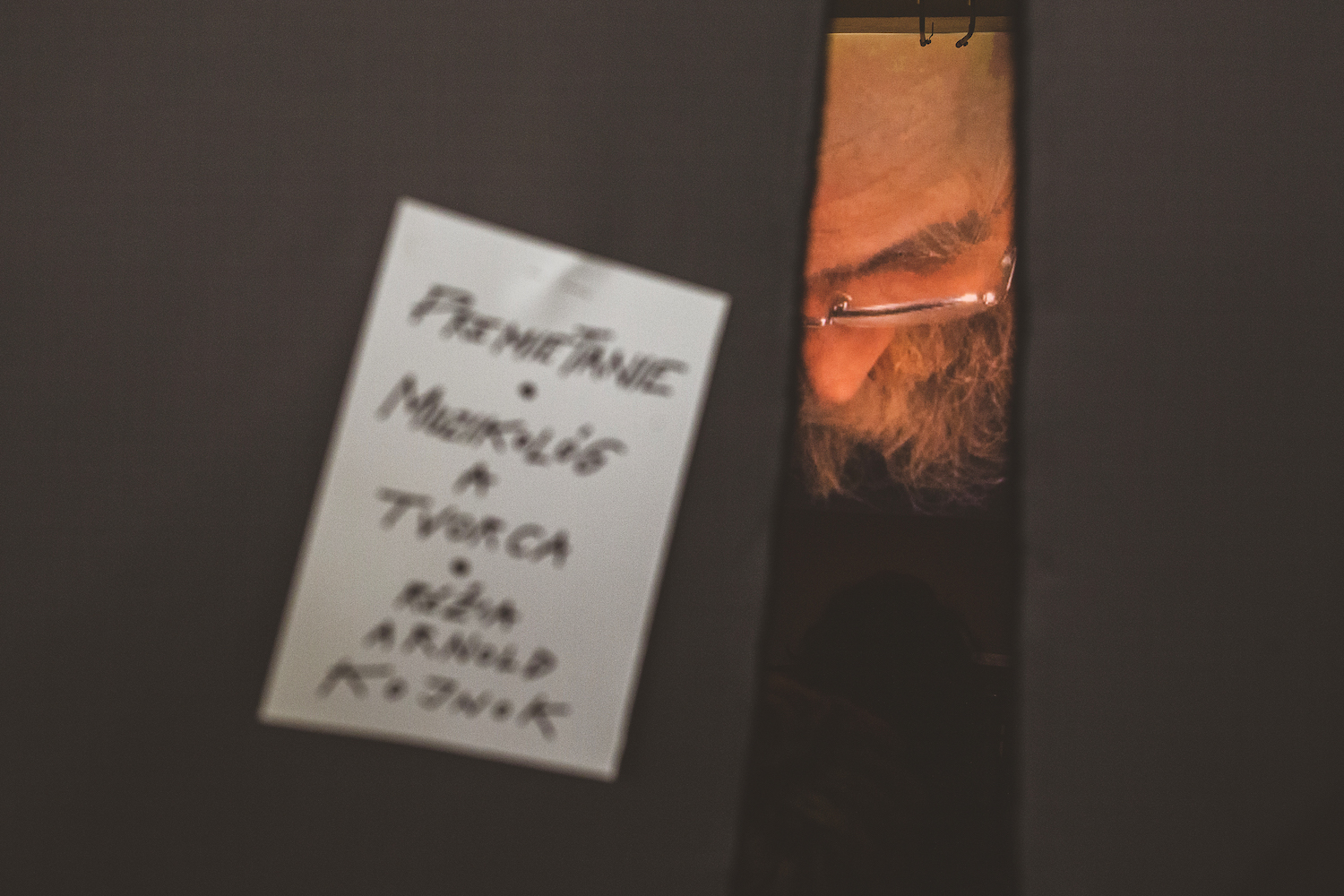It is autumn 2017. We roam on bicycles in the Štiavnické mountains, deep in appreciation of the local populace of Carlina vulgaris and other native flora. After a while, we stop at a pub in Banská Belá. We ask about Adamčiak. Despite our expectations, it turns out to be a topic of interest for the regulars who seem to have vivid memories and a real relationship with Adamčiak. An encouraging finding. As a by-product, an experimental radio play JAMA (authors: Fero Király, Ivo Šiller, Ján Šimko, 2018; broadcast on Rádio Devín) recorded on the spot, with the locals, pops into existence a few months later. Hand in hand with it another idea emerges, a plan still very tentative at this stage, but profoundly fascinating… We start looking for other souls to cooperate with on this idea and we approach Zuzana Bodnárova and Svätopluk Mikyta from Banská St a nica Contemporary, with whom Adamčiak has often found a well-equipped refuge for his creative adventures in his last years. The intention to revive Adamčiak’s legacy and his view of art in the region where he spent the last years of his life, through the current work of living artists, quickly evolves into a more concrete form. It is in October 2019 that we ceremoniously fill the hole left by Adamčiak’s departure with a pit (Slovak jama) for the first time.
The first JAMA – the 73rd year of Milan Adamčiak (organized organized under the headings Cluster ensemble and ISCM – Slovak section) takes place on October 4 and 5, 2019. It borrows its numbering from the age M.A. would have been, had he not died. JAMA was originally formed without any plans for the future. It was supposed to be a one-off event to commemorate Adamčiak, reviving his work and introducing him to the locals in Banská Belá and its surroundings. Its course and the spontaneous cooperation that it immediately provoked, quickly convinced us that it made sense to continue. In the meantime, it has changed into what we currently call an “intermedia art event.” The legacy of Milan Adamčiak is still its starting point, but from year to year, the theme relates more and more to an endeavor to find artistic and human freedom to realize art and respond to the world around us in any way that currently interests us.
In Adamčiak’s spirit, we strive to break down barriers and stereotypes, starting with our own. Just as Adamčiak was an artist and a scientist (a musicologist), we also try to create space for a symposium as well as for an artistic program every year. Established artists, as well as students and enthusiasts, have a place here. An important moment to which we are constantly returning is the connection of participants from different backgrounds and an engagement in social issues. Whenever circumstances allow, we encourage visitors to take an active part and directly involve the local community in the preparation of JAMA. JAMA tries to go beyond the classically perceived cultural event. Rather than a place where those who create the program meet those who have come to see it, it is a place for dialogue and joint inquiry into the workings of the world.
JAMA follows the theme of the interaction of artists from different fields with other people, but also with the changing world we live in. It is a time spent together that may – and should – look different each year because the space in which it takes place also changes from year to year. JAMA is a natural place to create new – often site-specific – works encouraging collaboration and unexpected connections. Since its founding in 2019, JAMA has been run in the dramaturgical-artistic concept of its founders, Fero Király and Eva Vozárová, in collaboration with Banská St a nica Contemporary. The first (73rd) year of M.A. took place in October 2019 in Banská Belá and Banská Štiavnica and was part of the year-round project Almázia – City of culture 2019. The second (74th) year took place in October 2020 as an online-only event without a live audience. The third (75th) year took place in October 2021 and its extension was the collective international exhibition Lost Human curated by Lucia G. Stach. This text originated as our contribution to the exhibition’s catalogue. Years numbered 76 and 77 followed and yet more years are still ahead of us.
 Photo: Ján Viazanička, JAMA – 73rd Year of Milan Adamčiak
Photo: Ján Viazanička, JAMA – 73rd Year of Milan Adamčiak




















































